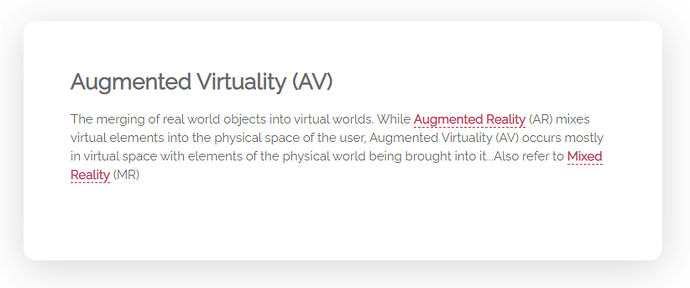Hi Marzia,
Thank you again for your suggestions.
I have completed a review of the terms and descriptions mentioned and below are the actions taken with their justification. Please let me know if you have further comments or suggestions:
Performing Monitoring: the description will change to include [[Asset]]s without removing [[Building Performance]] as follows:
A [[Model Use]] representing how 3D models are used to monitor and manage [[Energy Utilisation]] and other [[Performance Metric]]s for [[Asset]]s of all [[Asset Scale]]s….also refer to [[Building Performance]]
Building Performance: no change to the term - Building in Building Performance is the target Asset Scale for this term.
Thermal Analysis: no change to the description – Building is the target scale of the Thermal Analysis not other Asset Scales. Changing Building to Asset will lower the term’s precision.
Reflectivity Analysis: no change to the description – Building is the target scale of the Thermal Analysis not other Asset Scales. Changing Building to Asset will lower the term’s precision.
Site Analysis: the description will change to the following (as scheduled since March 11, 2020 in the Shared Master File) – Building is replaced with [[Asset]]:
A [[Model Use]] where [[BIM Software Tool]]s and/or [[Geographic Information System]] tools are used to decide on optimal site for an [[Asset]] or a construction project and/or to decide the optimal location of an asset within a specified site
Solar Analysis: no change to the description – Building is the target scale of the Thermal Analysis not other Asset Scales. Changing Building to Asset will lower the term’s precision.
Security Analysis: the description will change – the word ‘virtual’ will be removed. Removing the word increases the term’s applicability in Mixed Reality scenarios without reducing the term’s precision.
Value Analysis: no change to the description – the term ‘Value Management exercise’ is common in VM literature and there are specific VM exercises that can be conducted.
Please note that committing changes to the online tool awaits confirmation from the developer relating to translation version control.
I will post here once the updated terms are uploaded.
All colleagues are invited to suggest improvements to term descriptions especially if they improve both coverage and precision. As is try in all materials, they can always be improved.
Thanks
